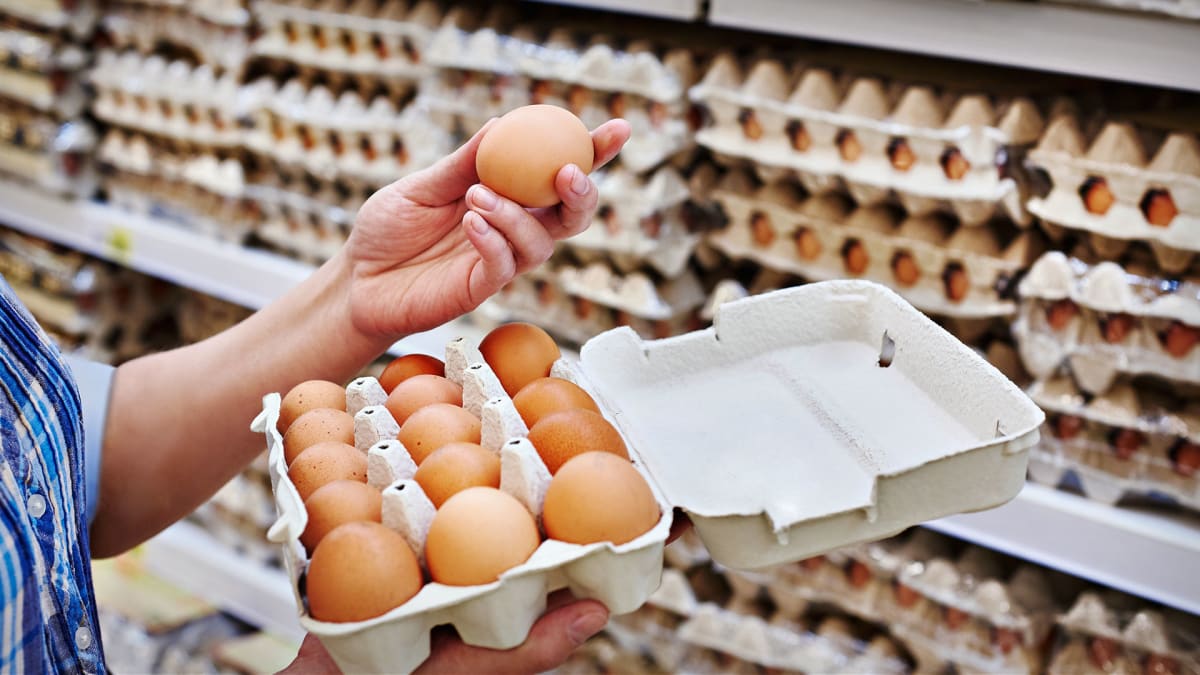
When it comes to egg prices, the yolk is on the U.S. consumer.
Egg prices doubled in price to $4.25 a dozen in December 2022 compared to $1.72 for a dozen eggs in late 2020.
In a year-over-year comparison from January 2022 to January 2023, the states with the highest egg prices to date include Arizona (up 97%), Nevada (up 82%), and New Mexico (up 78%), according to Datasembly’s Grocery Price Index. The states seeing the lowest price hikes are California (up 21%), Alaska (up 22%), and Washington (up 24%).
Economists point to multiple factors for skyrocketing egg prices, with Avian flu, stubbornly high inflation, and the war in Ukraine leading the list.
That’s no joke to the average U.S. adult, who eats 278 eggs annually, according to the US. Department of Agriculture.
The good news? Egg lovers should see a price break, soon experts said.
“Egg prices have been on the rise in the past year, increasing a total of 49% according to the consumer price index,” said LLC Services chief executive officer Dmytro Kondratiev. “However, prices may have begun to ease as the market adjusts to the avian flu outbreak, as the Consumer Price Index for All Urban Consumers (CPI-U) declined 0.1 percent in December.”
Breaking Down the Factors That Fuel High Egg Prices
While egg prices have been on the rise due to a number of factors, the Avian flu outbreak of 2015 and the subsequent shortage of eggs is likely the leading cause.
“There has been a compounding effect of bird flu on egg prices, as America experienced consistent bird flu outbreaks in 2022,” said EMU Coupon shopping analyst Elice Max.
As a result, grocery stores couldn't procure eggs from U.S. farms as production halted.
“Consequently, retailers then went looking for alternative egg suppliers, which increased the demand for eggs from suppliers,” Max said. “As fundamental economic principles have demonstrated, when the demand for an item exceeds the supply, the prices increase.”
There are myriad additional issues driving up the price of eggs since the second half of 2022.
“Add other factors like inflation, and there’s fuel, which is impacting our transportation,” said University of Arkansas System Division of Agriculture poultry economist Jada Thompson. “Plus, you have driver shortages and that increases the cost of production and getting eggs to the market.”
The Russia-Ukraine conflict has also contributed to rising egg costs, even thousands of miles away in the U.S. “Add the war in Ukraine into the mix,” Thompson noted. “You normally don’t think about affecting eggs directly, but that affects global feed supply and trade around the world.”
Additionally, corn and soybeans play a big role in chicken feed, Thompson said.
“Raising those crops has become more expensive thanks to fertilizer and diesel prices pushed higher by the Ukraine conflict,” she added. “The cost of feed for eggs has gone up something like 29.5 percent, and that’s a substantial portion of the cost that goes into producing an egg.”
An Egg Price Recovery Will Take Time
With a backlog of unmet demand and a scarcity of poultry, egg prices likely won’t substantially decline anytime soon.
“We don’t have a million birds laying around,” Thompson said. “It’s six months before we have a bird ready to lay an egg. It takes 21 days to hatch an egg and five months or 20 weeks to get that chick to maturity.”
While some key trends like the waning Avian flu and improving supply chains are easing egg supply and prices, “egg prices won’t be declining to 2021 levels,” Thompson added.







